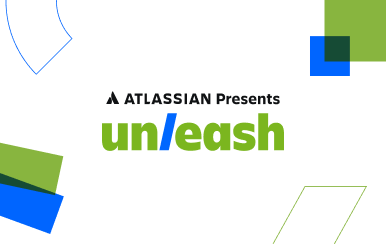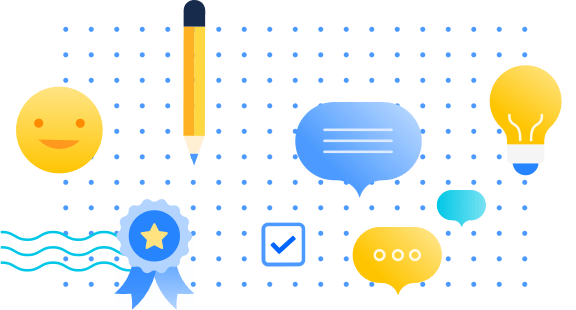Candidate Resource Hub
Browse topics
Interviewing
Atlassian engineering interview handbook
What’s it like to interview for an engineering role at Atlassian? An inside look at our process so you can shine.
At Atlassian, we use a lot of different tech stacks—and many different languages. Our engineering teams build on top of frequently used foundations to develop, ship, and run highly secure, reliable, and compliant software at scale. You might switch from one to another in a single week, solving problems on the backend, frontend, or somewhere else entirely. You might join us as a member of a Jira team and move to Trello a year later.
Instead of evaluating candidates based on their proficiency in a specific language, we’re looking for people with broad distributed engineering skills and experience with various languages. And we’ve designed our interview process accordingly: It’s an assessment framework based not on languages, but on qualifications such as problem-solving ability and learning agility. Because of this, we’re able to see a candidate’s depth and breadth. We’d like to see not only how you code, but how you think.
We’re excited to bring engineering candidates into this process—and to see them succeed. To give you an idea of what to expect, below we break down the process piece by piece
“We want to make sure we get to know candidates as humans—and we want them to get to know us.”
In the coding interview stage, we’ll draw from a different bank of questions, designed to assess your coding proficiency as well as your problem-solving skills. This portion of the interview is in two parts:
- Data Structures
- Code Design
Keep in mind that our coding interviews are different from a traditional technical interview—because you can choose the language you work in. Clean code matters, but what’s most important is how you think. We want to see your approach to trade-offs like verbosity versus optimization. This isn’t about following language-specific patterns in a particular code base, and missing a line isn’t a deal-breaker—it won’t cost you the job.
What might the coding prompts look like? Here are a few examples based on the role you’re applying for:
Software Engineer Roles
Principal Engineer Roles
The systems design interview is a chance to show off your creative thinking as you take on a real-life engineering challenges.
This 60-minute session is a technical interview—but that doesn’t mean the goal is code. Instead, your interviewer will choose from a set of structured questions designed to help us understand how you would tackle the problems we solve at Atlassian, from architectural challenges to scaling systems under specific conditions. We want to understand how you explore an issue—what questions you would ask, how you’d talk through constraints like reliability and cost, who you might partner with for help, and which technologies you’d use.
There’s no one right answer! The problem you’re asked to solve will likely have many viable solutions. But this is still meant to be a practical, not theoretical, conversation. Draw from your previous experience and use precise examples to explain what you would do and why. And like all of our interview questions, it will be designed to “ladder,” meaning your interviewer’s follow-ups can get more—or less—challenging as you progress. They might ask you to consider a different approach, or see how you adjust your thinking if a new trade-off is introduced. This is part of how we assess learning agility; we want to know how well you think on your feet.
In the manager interview, we’ll talk about who you are today—and who you want to be at Atlassian.
Of course, throughout the interview process, we want to make sure we get to know candidates as humans—and we want them to get to know us. But we also want to take the chance to dig a bit deeper, to talk through the impact you could have at Atlassian—and on how we’d be able to help you grow.
So in this session—usually one-on-one with either the hiring manager or a more senior manager on the team—we’ll ask questions designed to understand not just who you are, but also what you’re interested in and excited about. We’ll talk about how you can add value not only in the role and team you’re applying for, but in your long-term career at Atlassian. We see each Atlassian we hire as an investment in our company, and it’s critical that we understand where you are, and where you want to go.
We’ll also use this session to learn as much as we can about how you work, especially your collaboration and communication styles. Make sure you’re prepared to talk about a past project or two, from who you worked with to the technical challenges you had to overcome. You could also speak to the business justification for the project—the reason you were working on it in the first place. How you describe what you’ve done tells us a lot about what it might be like to work together.
So remember, we’re here to help you, not to stump you. If you don’t know what to do, say so! Communication and collaboration are key skills on our team, so just think of it as another opportunity to show your stuff.
“How you describe what you’ve done tells us a lot about what it might be like to work together.”
The values interview is designed to assess your alignment with—and answer your questions about—Atlassian’s five values.
To Atlassians, values aren’t the same as culture. The latter changes as we grow, and varies from office to office. But our values stay the same. They’re the backbone on which a sustainable company is built. And because our values are woven into our practices, processes, and the way we run our teams, your values interviewer likely won’t be a member of the team you’re applying to join; it could be someone from Sales, HR, or Customer Support. They’ll have a set of questions to guide your conversation, but these are usually fairly informal meetings. Our goal is to understand your mindset, and the way it guides your actions.
After successfully completing the interview process, your interviewers will consolidate feedback and debrief. If there's a good fit between your skills and experience, you will progress to the final stage in the process - being reviewed by a Hiring Committee.
As part of our hiring philosophy, and to ensure a consistent and equitable interview experience, we’ve introduced a Hiring Committee as the last stage in our hiring process. Atlassian hiring committee members are separate from the interviewers you will meet and only have access to specific information relating to the interview process (this includes interview feedback and CV information).
The hiring committee will look holistically at skills, strengths and behaviours, ensuring an objective hiring decision.
As you go through this process, we want you to have a great experience - and we want to do everything we can to bring out the best in you, because it’s your best that will determine how you can contribute to our team. So remember, we’re here to help you, not to stump you. If you don’t know what to do, say so! Communication and collaboration are key skills on our team, so just think of it as another opportunity to show your stuff. Most important, know that we’re not hiring with one perfect candidate in mind. Instead, we’re bringing in people with a wide range of skills, backgrounds, and perspectives, and giving them every possible opportunity to put their best foot forward.
Adjustments for individual needs
To ensure you have the best candidate experience possible, please let your Talent Acquisition Partner know what accomodations or adjustments you require at any stage of the recruitment process.

